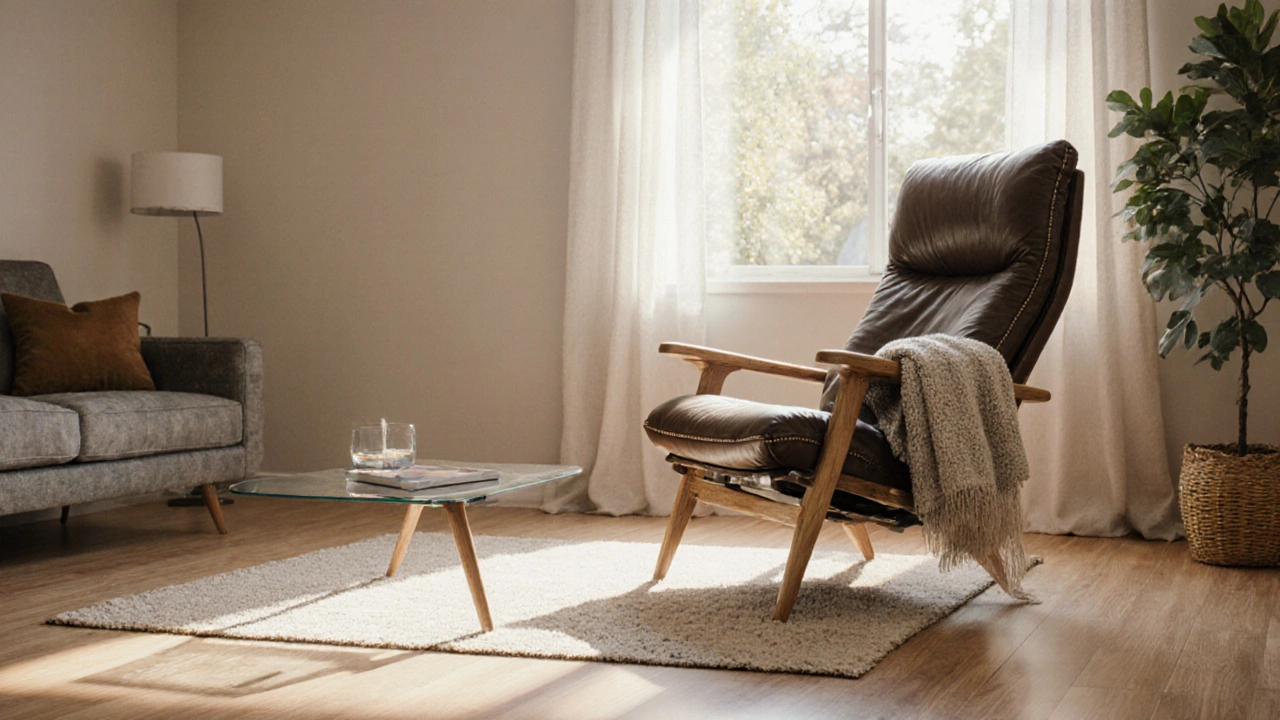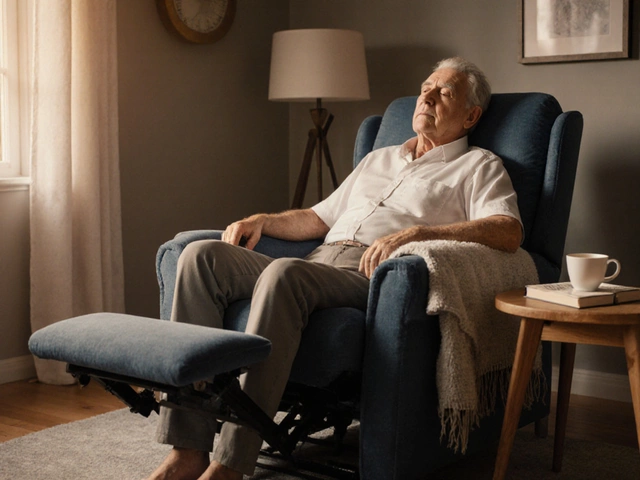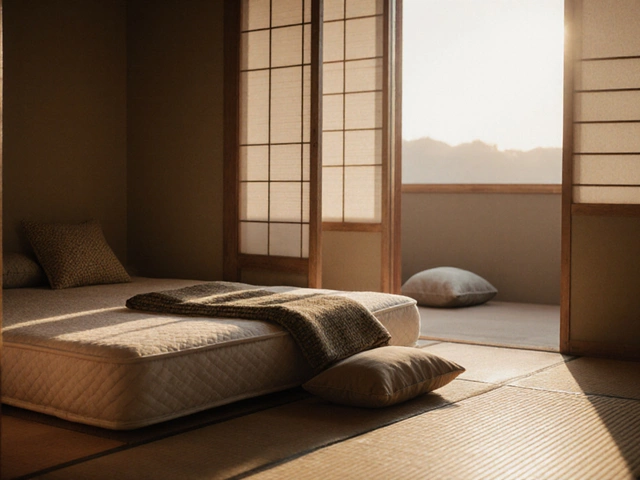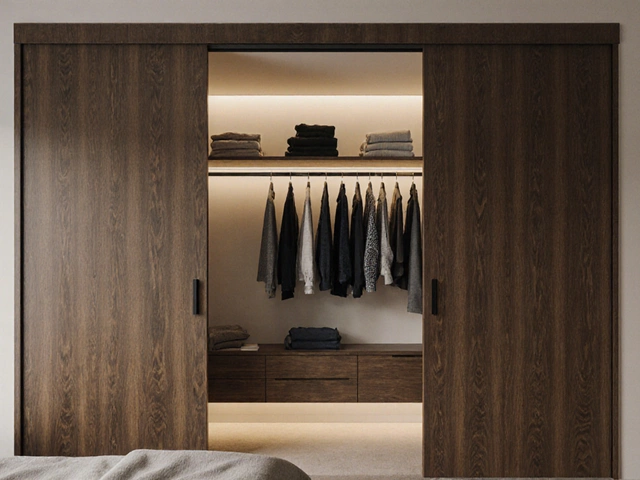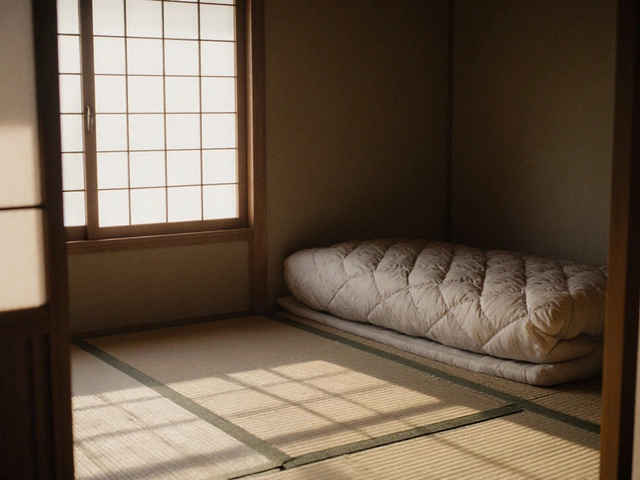Lazy Boy Recliner Cost Calculator
Cost Breakdown
Value Calculation
Price Comparison Table
| Brand | Price Range | Upholstery | Recline Mechanism | Warranty |
|---|---|---|---|---|
| Lazy Boy | $1,200–$2,800 | Genuine leather / premium fabric | Power-hand or dual-motor | 5–10 years |
| Ashley Furniture | $800–$1,500 | Synthetic leather / fabric | Manual or basic power | 3–5 years |
| IKEA | $500–$900 | Polyester blend | Manual | 2 years |
| Lane Furniture | $1,000–$1,800 | Top-grain leather | Power-hand | 5 years |
When you see a Lazy Boy recliner chair that carries a hefty price tag, you might wonder why it costs so much more than a basic sofa or a budget-friendly recliner.
Quick Takeaways
- Premium materials like genuine leather and hardwood frames drive up the base cost.
- Advanced recline mechanisms (power‑hand, dual‑motor) add both performance and price.
- U.S. manufacturing and strict quality controls increase labor expenses.
- Dealer mark‑ups, warranties, and branding contribute to the final retail price.
- Understanding these factors helps you decide if a Lazy Boy is worth the investment.
Brand Legacy and Design Philosophy
Founded in 1927, Lazy Boy built its reputation on comfort and durability. The company patented the first reclining mechanism in the 1930s and has refined it over nearly a century. That heritage means each model incorporates decades of engineering research, which translates into higher R&D costs passed on to consumers.
Materials That Add Up
Most premium Lazy Boy recliners use genuine leather or high‑grade fabric. Genuine leather alone can cost $30‑$50 per square foot, while high‑performance synthetic leathers are still $15‑$20 per square foot. Compare that with a standard cloth upholstery that might be $5‑$8 per square foot.
The internal cushioning often features memory foam or high‑density polyurethane foam with a density of 2.5lb/ft³ or more. Higher density foam provides better support and longevity but adds roughly $10‑$15 per cubic foot to material costs.
Frames are typically constructed from hardwoods such as oak or maple, reinforced with metal brackets. A solid hardwood frame can cost $200‑$300 per chair, whereas a particle‑board frame used by budget brands might be under $50.
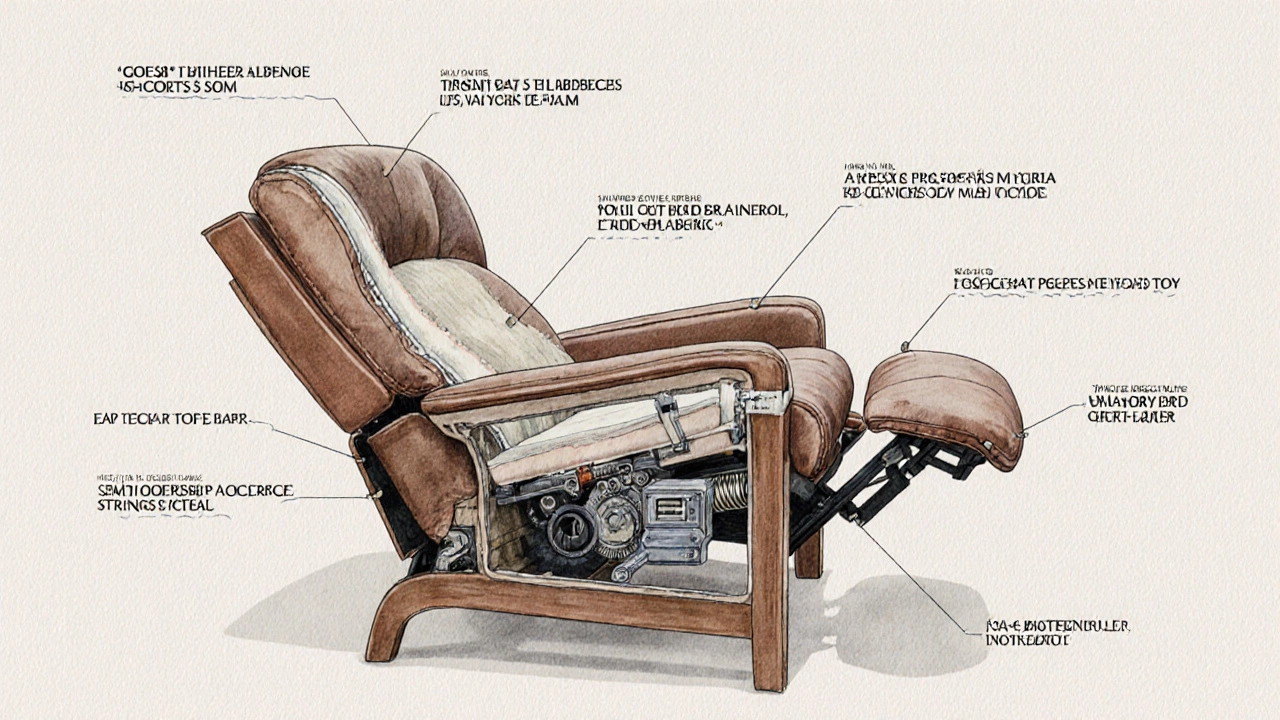
Mechanical Systems: From Manual to Power
Lazy Boy offers several recline mechanisms:
- Manual lever - simplest, cheapest, but still engineered for smooth motion.
- Power‑hand - uses a small motor to assist the lever, costing $80‑$120 extra.
- Dual‑motor power recline - independent control of seat tilt and footrest, often paired with USB charging ports; adds $200‑$300.
These mechanisms involve precision‑engineered gears, springs, and electronic components, each increasing the bill of materials and assembly time.
Manufacturing Location and Labor
Lazy Boy retains a significant portion of its production in the United States. American labor rates for skilled furniture assembly average $25‑$35 per hour, compared to $5‑$10 abroad. Even with automation, the labor cost for a single recliner can rise by $150‑$250.
Domestic manufacturing also requires compliance with stricter safety and environmental standards, adding certification fees and quality‑control audits.
Distribution, Retail Mark‑up, and Warranty
After the chair leaves the factory, it goes through a distribution network that includes regional warehouses, freight carriers, and finally, the dealer showroom. Each step incurs handling fees, insurance, and transport costs-typically $30‑$50 per unit.
Dealers then apply a mark‑up ranging from 30% to 50% to cover showroom expenses, staff commissions, and financing options. For a chair with a base cost of $1,200, that markup can add $360‑$600 to the final price.
Lazy Boy also backs its recliners with a limited warranty of up to 10years on mechanisms and 5years on upholstery. The warranty cost is built into the price through insurance premiums and the administrative overhead of service centers.
Price Comparison with Competitors
| Brand | Price Range | Upholstery | Recline Mechanism | Warranty |
|---|---|---|---|---|
| Lazy Boy | $1,200‑$2,800 | Genuine leather / premium fabric | Power‑hand or dual‑motor | 5‑10years |
| Ashley Furniture | $800‑$1,500 | Synthetic leather / fabric | Manual or basic power | 3‑5years |
| IKEA | $500‑$900 | Polyester blend | Manual | 2years |
| Lane Furniture | $1,000‑$1,800 | Top‑grain leather | Power‑hand | 5years |
The table shows that Lazy Boy’s price sits at the top end, largely because of premium materials, sophisticated mechanisms, and a longer warranty.
Is the Cost Justified? Calculating Value
To decide if a Lazy Boy is worth the price, consider the cost per year of use. Assume an average user spends 2hours a day lounging. Over a 10‑year lifespan, that’s roughly 7,300hours. A $2,000 recliner works out to about $0.27 per hour of comfort. Compare that to a $800 competitor, which would be $0.11 per hour-but the cheaper model may need replacement after 5 years, doubling the effective hourly cost.
Other intangible benefits include:
- Resale value - well‑maintained Lazy Boys often fetch 50‑60% of the original price.
- Health benefits - ergonomic lumbar support can reduce back strain, potentially saving medical costs.
- Customization - many models allow fabric swaps, power‑seat programming, and built‑in USB ports.
Common Misconceptions About the Price
Some shoppers think the markup is purely “brand hype.” While brand prestige does play a role, the price gaps are largely traceable to tangible factors listed above. Another myth is that all recliners are built the same; in reality, the engineering tolerances for Lazy Boy’s power mechanisms are tighter, leading to smoother operation and longer durability.
Tips for Getting the Best Deal
- Shop during major sales events (Labor Day, Black Friday) when dealers often trim the 30‑50% markup.
- Consider floor models or open‑box units; they’re often discounted 10‑15% with minimal wear.
- Negotiate the delivery fee - some retailers will waive it for large purchases.
- Ask about upholstery upgrades that are on‑sale; a premium leather upgrade might be $200 off its usual price.
- Check the warranty details; a longer warranty can be a bargaining chip for a lower base price.
Frequently Asked Questions
Why does a Lazy Boy cost more than a standard sofa?
A Lazy Boy combines premium materials, a sophisticated recline mechanism, and a long‑term warranty-all of which add significant cost beyond what you find in a regular sofa that lacks moving parts and high‑grade upholstery.
Are all Lazy Boy recliners made in the USA?
Most of the high‑end models are assembled in the United States, though some components (like foam cores) may be sourced internationally.
What is the typical warranty coverage?
Lazy Boy offers a 5‑year warranty on upholstery and a 10‑year warranty on the recline mechanism, covering defects in materials and workmanship.
Can I customize the fabric or leather?
Yes, most models let you choose from a range of fabrics and leathers during purchase, and many dealers offer aftermarket upholstery swaps.
How does the price compare after taxes and delivery?
Sales tax (typically 6‑9% depending on state) and delivery fees ($50‑$150) add to the final cost, so a $1,500 chair can end up around $1,700‑$1,800.
Understanding the Lazy Boy price isn’t just about seeing a big number; it’s about knowing what you’re paying for - premium materials, engineered comfort, and a long‑lasting warranty. Armed with this knowledge, you can decide whether the investment matches your comfort needs and budget.

